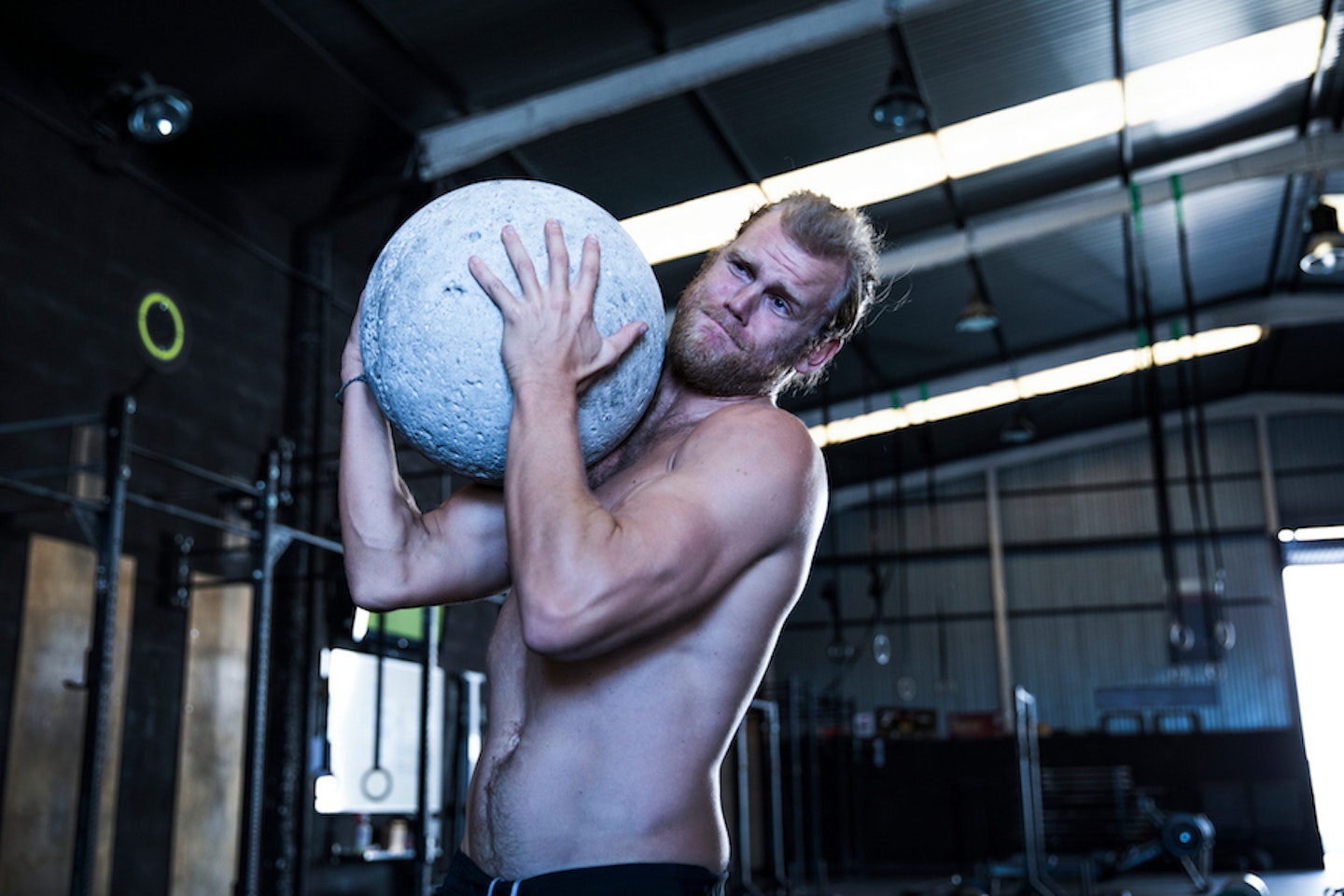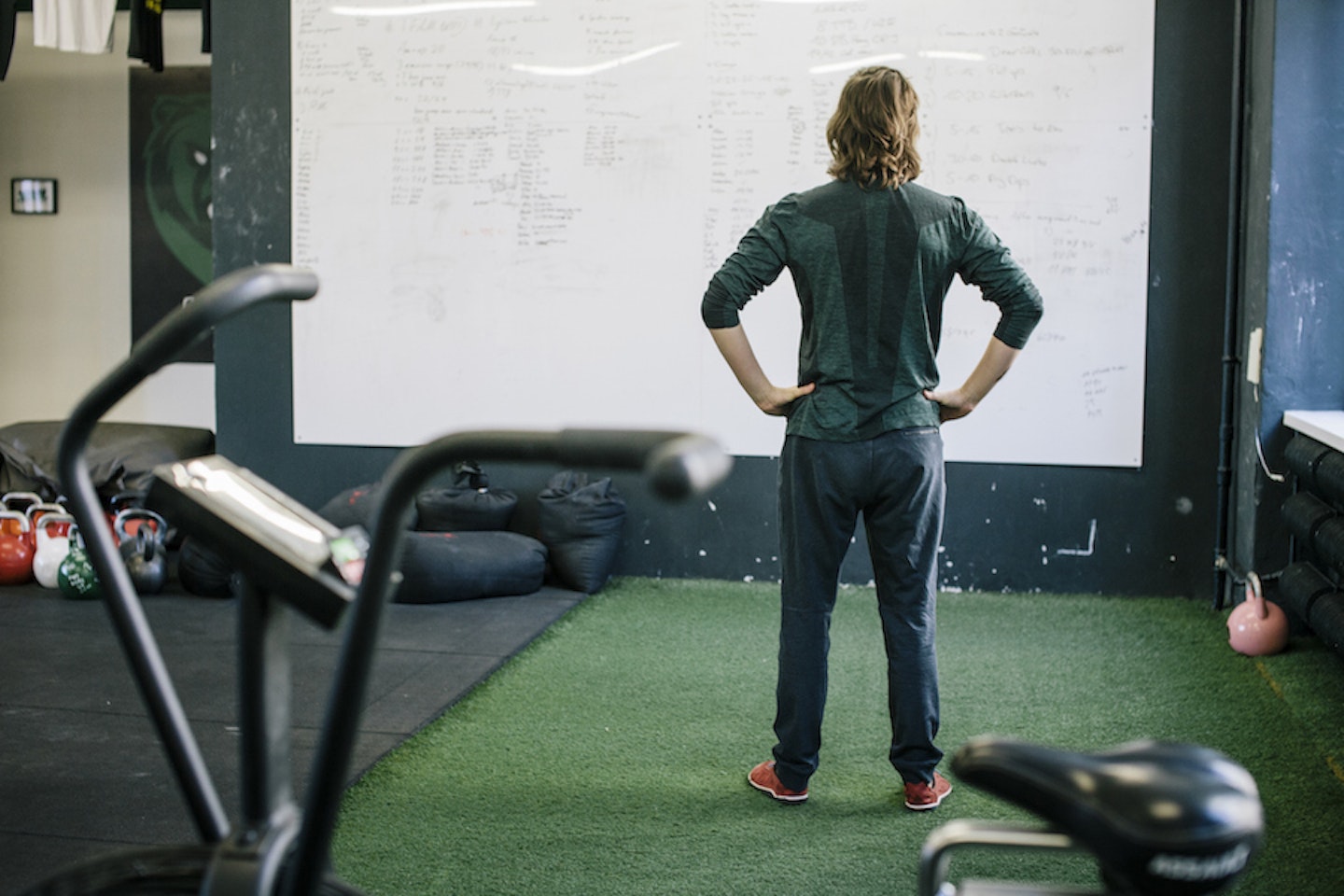Strength training enthusiasts worldwide are familiar with the legendary Hafthor Bjornsson, the Icelandic strongman who has undoubtedly inspired many to hit the gym - be in it the home gym or otherwise. Inspired by a video of Bjornsson lifting a 228 kg (502 lbs) Atlas Stone for two reps, I decided to set a thrilling goal for myself - to discover what my Atlas Stone lifting ability truly is.
Bjornsson rose to global fame for his portrayal of Sir Gregor "The Mountain" in the TV series Game of Thrones, but beyond his acting career, Bjornsson is renowned for his exceptional strength and dominance in strongman competitions. Not to mention, he currently holds the world record for the heaviest barbell deadlift, casually hoisting a mind-boggling 501kg.

In this article, I'll share some insights and methods related to Atlas Stone training, specifically focusing on periodisation.
What is a strongman competition?
Strongman competitions are a test of pure strength and power. These events feature a variety of challenges, including lifting heavy objects, dragging weighted sledges and moving vehicles. Competitors showcase their strength across multiple disciplines, making it one of the most demanding and dynamic strength sports. The most famous strongman event is the televised World's Strongest Man.

What is an Atlas Stone?
Atlas Stones are spherical, concrete, or natural stone balls with various weights, typically ranging from 45kg to 180-plus kg. The objective is to lift these massive stones onto a platform, showcasing the competitor's raw strength and technique. Unlike lifting weights with dumbbells, barbells or kettlebells, which are to various degrees ergonomically design for human grip and can be assisted by lifting straps, the Atlas Stones prove a unique challenge as they are large, spherical and totally smooth.
The Atlas Stones is an iconic event in the World's Strongest Man contest. They're typically the final event of strongman competitions, and the outcome often determines the winner. Originally, competitors lifted the stones onto platforms at waist height. The event has since evolved, with the Atlas Stones increasing in weight and platforms varying in height.
How to master the Atlas Stone technique

Instructions:
• Position yourself directly over the stone.
• Pinch the stone between your forearms and elbows and place your hands deep for better grip.
• Take a deep breath and brace your core.
• Lift the stone with a Romanian deadlift technique, not a conventional deadlift.
• Load the stone onto your lap by bringing your feet together and rolling it close to your torso.
• Place your arms over the stone at 10:00 and 2:00 positions.
• Hug the stone tightly to your body and lift your hips first, then extend them as the stone reaches its peak height, envisioning it rolling up your chest.
For visual learners, watch expert athletes like Brian Shaw, Eddie Hall and, of course, Hafthor Bjornsson, who excel at the stone-loading technique. I watched a tutorial video of Tom Stoltman showing how to perform the feat.
Are you struggling to grip the stone?
For a little extra help, you can use tack, sometimes called 'strongman tacky' or 'Atlas tacky', which is a sticky substance often derived from pine resin that is placed on the hands and forearms to provide a firmer grip on the stone.
The only downside to this tack is that it's incredibly messy and challenging to clean up. For those who do not compete in strongman events, this is optional. Instead, you can opt for lifting chalk, or for hardcore folks, you can go bare-armed.
Incorporating the Atlas Stone into training:
Strength:
Programming for absolute strength with the Atlas Stone is relatively straightforward. Typically, athletes focus on low repetitions, usually in the 85 to 100 percent of your one rep max, a 1 - 2 rep range, and perform 3 - 5 sets at the chosen weight. When training with the Atlas Stone, it's advisable to load it to a lower platform height, approximately 40 to 60 inches.
If your goal is maximising weight during a single training session, it's beneficial to dedicate an entire workout to Atlas Stone lifting. On the other hand, if it's considered a secondary movement, it can be placed at the end of a deadlift or squat session to accommodate the nervous system. By the end of a deadlift or squat session, your central nervous system is activated, and your muscles are pre-fatigued. This pre-fatigue can simulate real competition scenarios where you might already be fatigued from earlier events before attempting a stone lift. This is especially relevant in strongman competitions.
As for rest periods, it's essential to allow for adequate recovery between sets, especially with such a demanding exercise. Rest times can vary depending on individual conditioning and goals. Still, a standard guideline is to rest for around three to five minutes between sets to ensure that you're fully recovered and able to exert maximum effort in each set. Adjusting the rest period based on how you feel and your training goals is also a good practice that many strongmen practise.
For power:
The approach to training power and lifting the stone differs significantly from focusing on pure strength. In this context, athletes should prioritise swift and explosive execution, minimising the time spent transitioning from hip to full extension. When working on power in stone lifting, it is recommended to aim to propel the stone during the motion.
Start with a lighter stone to master the technique initially. After you've become proficient, gradually progress to stones of moderate weight. Aim for 3 - 6 sets of around 75 – 85 percent of your one rep max, 3 - 5 repetitions, emphasising speed and the explosive lifting of the weight from your chest.
Regarding the platform height, commence at around 40 - 52 inches and gradually raise it as you maintain the same stone weight. When athletes master a particular weight, they can increase the stone's weight and return to the 40-inch starting height, then slowly raise it again.
For optimal power when using the Atlas Stone, it's generally recommended to take approximately two to five minutes of rest between sets.
My experience in training with an Atlas Stone
My main concern was dropping the giant ball of stone on my foot. I was apprehensive about the whole experience, especially when my first session was on a Saturday morning during peak gym time.
I'm an experienced lifter, and honestly, it was a humbling experience. The sheer weight and unwieldy shape of all the stones to choose from felt intimidating because this was new and out of my comfort zone. It reminded me of how I felt when I first entered a gym and saw a barbell and a dumbbell rack - now, when I come across these, I don't bat an eyelid.
I started using more manageable stones, weighing 40kg and progressively advanced to even heavier ones in 10 - 20 kg increments - as I went up in weight, I dropped lower in reps.
Each new milestone brought a profound sense of achievement that was incredibly gratifying. Training with the Atlas Stones not only bolstered my self-assurance but also strengthened my mental fortitude. It demanded solid concentration, stubborn determination, and perseverance to conquer these formidable behemoths.
I set a goal to reach the coveted 100kg mark, but my initial and second attempts proved to be setbacks. Undeterred, I decided to persist with a 90kg stone, which was my one-rep max, and later that day, I formulated a strategic plan for success over the next four weeks.

My Atlas Stone training plan:
Week one and two - Accumulation Phase (Building a Base):
During weeks one and two, the goal was to focus on mastering the technique and building a solid base working with submaximal weight, 70-80 percent of my one rep max - around 70kg - to refine my form. The sets and reps were higher volumes, consisting of 5 sets and 5 reps with a three-minute rest period. My training frequency for the Atlas Stone was two or three times per week.
Week three - Intensification Phase (Increasing Intensity):
During this phase, edging closer to my one rep max of 90 kilograms, 85-90 percent of my one rep max - around 76 to 81 kg. The reps were reduced, and the sets increased - 3 reps for 6 sets. The focus continued to work on control, explosiveness, and speed in the lifts.
Week four - Peaking Phase (Maximal Effort):
At the beginning of week four, I attempted to lift the 100kg Atlas Stone with success. The secret is to prioritise rest and recovery in the days leading up to a new one-rep max attempt.
De-load:
If I hadn't lifted the 100kg stone in my week four attempt, I would have used the rest of the week as a deload phase with lower volume and intensity. This would allow my body to recover for week five.
Re-test:
If my attempt had failed, at the end of week six, I would perform another attempt at beating my one rep max again, which, luckily, I didn't have to.
Pros and cons of using an Atlas Stone:
Pros:
Atlas Stones demand functional strength that translates to real-life situations, making them an excellent addition to any strength training routine. Lifting Atlas Stones engages multiple muscle groups, including the legs, back, core and arms, providing a full-body workout.
Conquering an Atlas Stone can be a mental challenge as well. It requires focus, determination, and the ability to overcome self-imposed limitations.
From a sports performance perspective, loading Atlas Stones mimics the movements of blocking and tackling in American football, as well as many other sports. This is because the extension of the hip, knee, and ankle - known as a triple extension - is a movement necessary to be performed explosively for many sports movements like rugby and sprinting and is the key to athletic power.
Holding the stone builds crushing strength that fighting, wrestling and contact sports will find beneficial. Furthermore, the torso musculature is highly active in stabilising the spine during the stone lift and performing the extension that allows the stone to be loaded. Dr Stuart McGill, a world-renowned lecturer and expert in spine function, rehabilitation, and injury prevention, found that the Atlas Stone generated the lowest spine compression compared to the log and tyre.
Due to strongman athletes curved their torsos over the stone, they kept their centre of mass closer to their lower backs. Along with all these benefits, muscle activation levels revealed that the most significant gluteal activity occurred during the Atlas Stone, as did the quadriceps, the upper erector spinae and many of the abdominal muscles compared to the log and tyre.
For powerlifting and weightlifting, all the above benefits can transfer to the competition lifts. Weightlifters will benefit from training the whole body and increasing spinal stability, increasing power transfer in all three of the competition lifts. It will assist in the deadlift, as the stone is essentially pulled from a deficit, then utilises the triple extension needed to finish the lift, strengthening locking out pulls.
Cons:
Lifting heavy Atlas Stones carries a risk of injury, especially for those without proper training and technique. It's crucial to learn the correct form and progress gradually.
You will need access to Atlas Stones and a suitable training area, which may only be available for some, especially in commercial gyms. Using Atlas Stones may need a significant amount of space, both for training and for storage. This can be a limitation for those training in a strongman gym that's busy and has a limited amount of space.
Properly lifting an Atlas Stone requires a specific set of techniques, including the 'lapped' technique and the extension technique. Learning and mastering these techniques can take time and may only be suitable for some.
Simon Diamond is a contributor to What’s The Best with over a decade of expertise in fitness, nutrition and wellbeing. A former bodybuilder and fitness model winner, Simon holds multiple World Records for muscular endurance and strength titles.
Subscribe to the What’s The Best Newsletter to keep up to date with more of the latest reviews and recommendations from the rest of the What’s The Best team.
